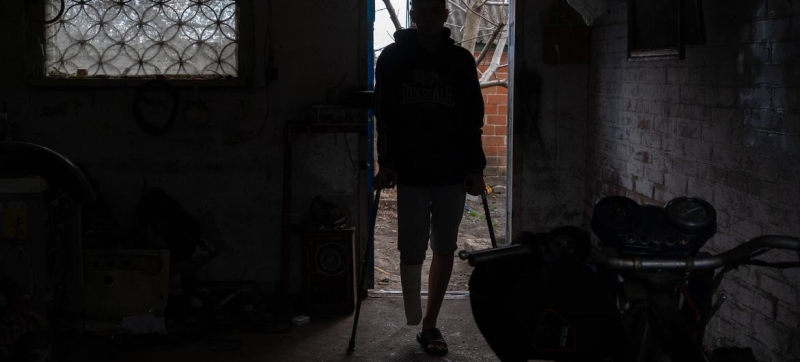
Boys aged 14 to 17 years are most likely to exhibit dangerous behavior involving explosive objects. UNICEF: Teenage boys in Ukraine tend to ignore mine danger Peace and Security
Despite good knowledge of the risks associated with mines and unexploded ordnance, 53 percent of Ukrainian teenagers continue to expose themselves to danger. These are the conclusions of a study on awareness of the risks of explosive ordnance and safe behavior practices , conducted by the United Nations Children’s Fund (UNICEF) and the sociological group “Rating” among Ukrainian children aged 10 to 17 years and their families.
Despite 97 percent of respondents saying they know safety rules, risky behavior is still widespread.
Boys are prone to risky behavior
Boys aged 14 to 17 are the most likely (62 percent) to demonstrate dangerous behavior involving explosive objects. According to the study, they behave more independently, spend more time outside the home and explore new places.
Additionally, teens from rural areas and low-income families are more likely to be involved into risky activities.
The most common risky behaviors include spending time near bodies of water, in forests and fields, on or near bridges and railroad tracks, and in damaged and abandoned buildings or military facilities.
Children aged 10 to 13 demonstrate the highest level of safe behavior. Older teenage girls also exhibit safer behavior. For example, 48 percent of girls are in the low-risk group, compared to 38 percent of boys.
Awareness Doesn’t Always Lead to Safety
More than 90 percent of teenagers surveyed reported that they had received training on the risks associated with explosive hazards. Teenagers from Zaporozhye, Kharkov, Kherson, Donetsk and part of Sumy regions demonstrated the highest level of awareness and knowledge about mine safety. In contrast, adolescents in polluted areas of the Chernihiv, Kyiv and Zhytomyr regions showed lower levels of awareness, similar to the indicator in the “unpolluted” central areas. The lowest awareness was found among teenagers in the western regions, where the threat of mines and unexploded ordnance is minimal.
“It is important to understand that high awareness does not always mean safe behavior,” the representative said UNICEF in Ukraine Munir Mamedzade. – Children who have been educated about mine safety may still engage in risky behavior. That is why UNICEF continues to work with partners to implement behavior change interventions aimed at creating a culture of safety among children, adolescents and their caregivers.”
Key factors influencing on behavior
Computer games, especially shooter games, reduce the risk perception of ammunition. Teenagers who spend a lot of time online or play such games are more likely to engage in risky behavior. Boys, in particular, often prefer this pastime, which dulls their sense of threats in real life. At the same time, teenagers who spend their leisure time at home with their families, reading books or watching movies, are less likely to engage in risky behavior.
Special events and lessons that use a variety of entertaining formats promote safety. Adolescents who received information about mines through UNICEF cartoons and comics demonstrated the highest levels of safe behavior.
In addition, adolescents whose parents repeatedly discussed the risks with them behave less dangerous than those whose parents rarely or never discussed these issues.
Myths and useful information
Teenagers often believe common myths about explosives, according to a study. These include misconceptions that using a mobile phone near a mine can cause it to detonate, that an explosive device will become inert after being in the ground for several years, that it is safe to touch unexploded ordnance or mines and approach anti-tank mines, and that mines can be handled with care. touch if the sappers have already removed the TNT from them.
Read also:
Mines and unexploded ordnance in Ukraine – a multi-billion-dollar problem for the whole world
The study also shows that educational institutions and parents are the main sources of information about explosive subjects. Young children are more likely to learn about munitions and mines at school, from their parents, or from cartoons, while older teens tend to get information from social media, websites, and from rescue workers and the military.
More than 80 percent of young Ukrainians can identify explosive materials. Teens know better than their parents what to call if they see something dangerous, and younger children know 101 best.
However, only 55 percent of teenagers contaminated areas recognize the white and red tape as a sign of a mine danger, while others do not associate it with a real threat of mines, believing that it is a warning and a prohibition of passage.
